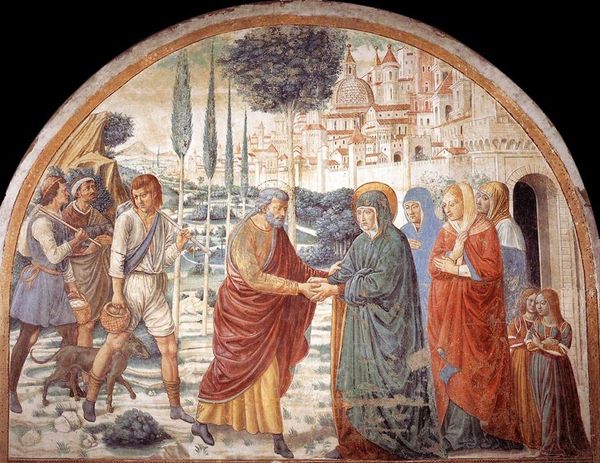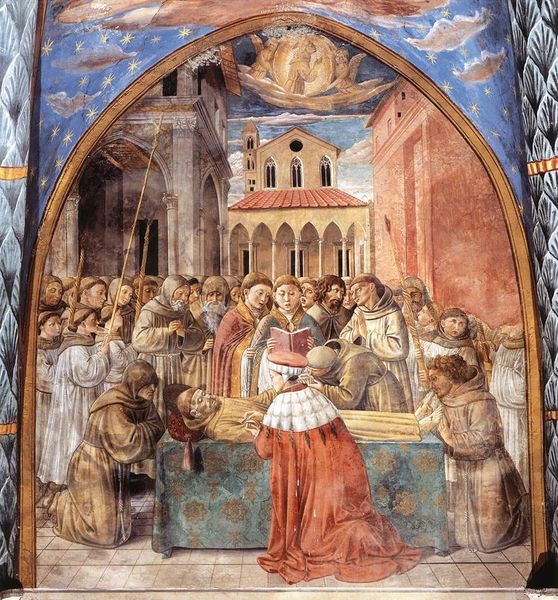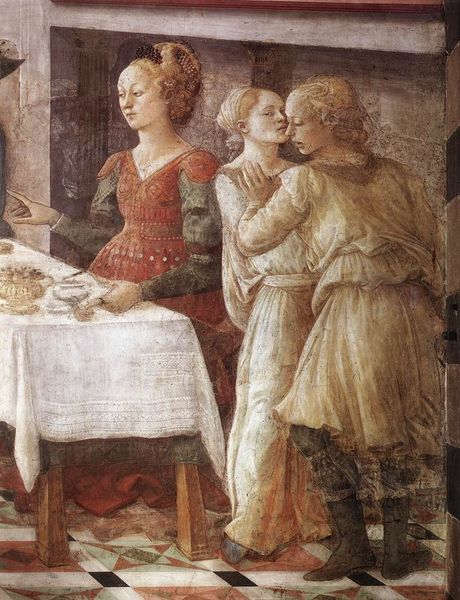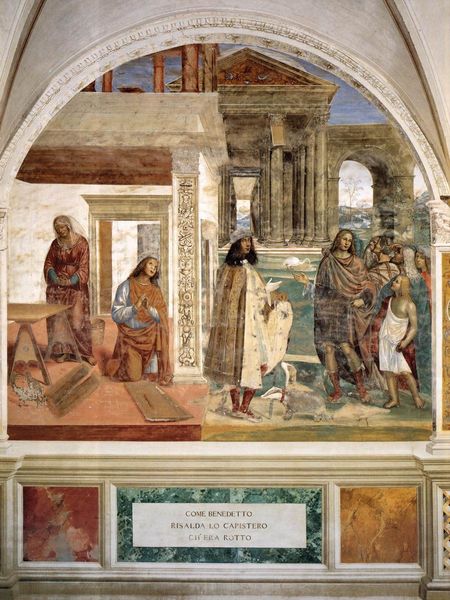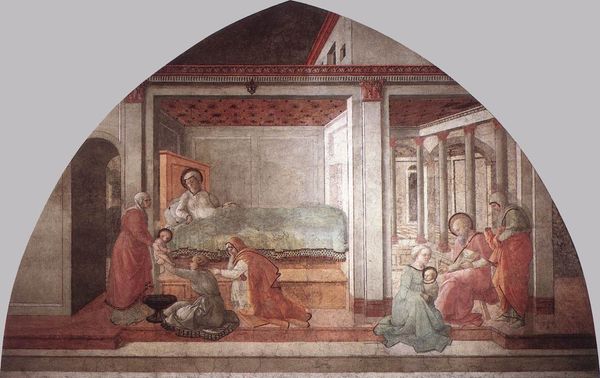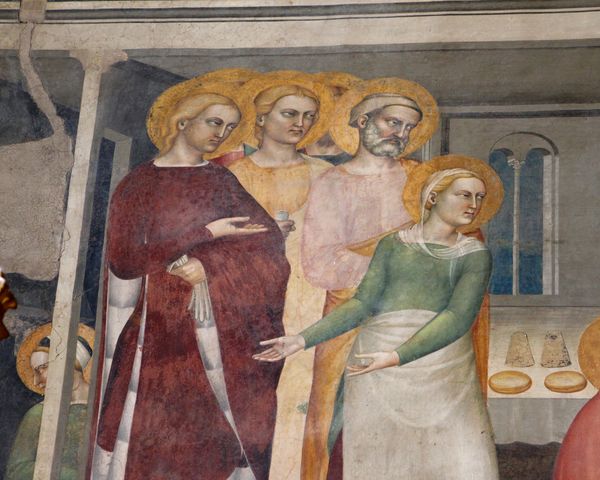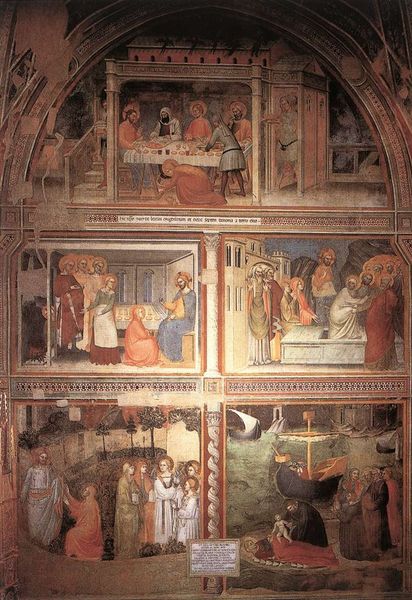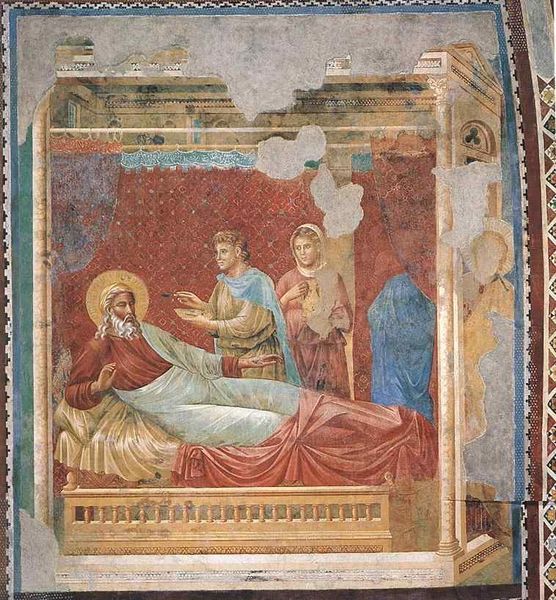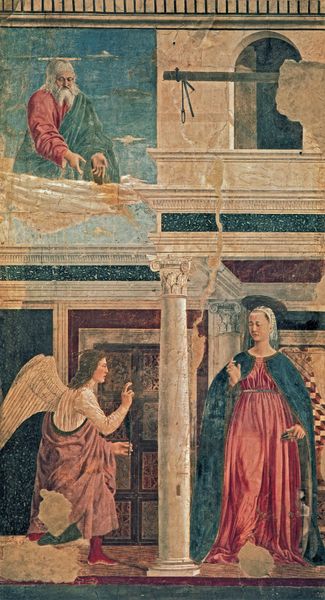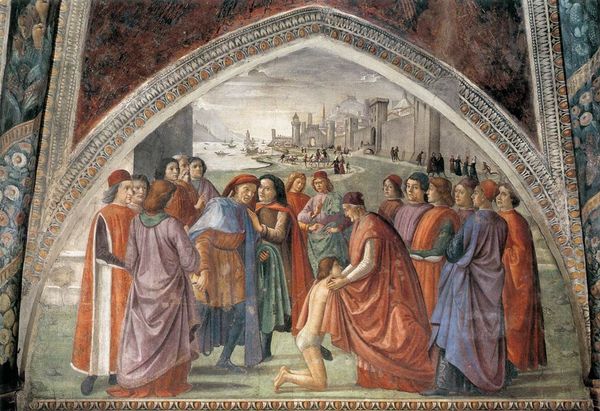
tempera, painting, oil-paint, fresco
#
portrait
#
narrative-art
#
tempera
#
painting
#
oil-paint
#
figuration
#
fresco
#
madonna
#
oil painting
#
jesus-christ
#
child
#
christianity
#
painting painterly
#
italian-renaissance
#
early-renaissance
#
virgin-mary
Copyright: Public domain
Editor: This is Domenico Ghirlandaio's "Madonna and Child with St. Sebastian and St. Julian," created around 1473 using tempera. I’m struck by how domestic and serene the Madonna appears, yet she's flanked by these figures with symbols of violence. What do you see in this piece, especially considering its time? Curator: That contrast is key. Placing these martyr saints—Sebastian with his arrows, Julian with his sword—alongside the Madonna elevates them, associating their sacrifices with her sanctity. This was common during the early Renaissance, where religious imagery was often intertwined with civic identity. Patrons often commissioned art for specific chapels. Are we sure where this piece was initially displayed? Editor: I’m not certain of the exact location. Does knowing where it was situated originally significantly change how we see it? Curator: Absolutely. Was it in a wealthy family's private chapel, showcasing their piety and social standing? Or was it meant for a public space, aiming to inspire broader devotion and loyalty to the city-state through its veneration of local saints? The institutional context significantly impacts its meaning. Who would have viewed it, and what messages would it convey about the intersection of religion, politics, and family power? Editor: So, even the choice of these particular saints might have been influenced by local politics or family patronage? Curator: Precisely. Sebastian, often invoked against plague, might signal a period of disease or anxieties about public health. Julian, patron saint of hospitality, could relate to the family's role within the community. The imagery acts as a powerful signifier of identity, weaving together religious, civic, and personal narratives for its intended audience. Editor: That's fascinating. I had focused primarily on the artistic aspects, but understanding its intended public really opens up a whole new perspective. Curator: Exactly. The art served its purpose within a very particular context. Knowing that, allows us to see it with fresh eyes, acknowledging its historical and societal influence, and what it tells us about that period's culture.
Comments
No comments
Be the first to comment and join the conversation on the ultimate creative platform.

